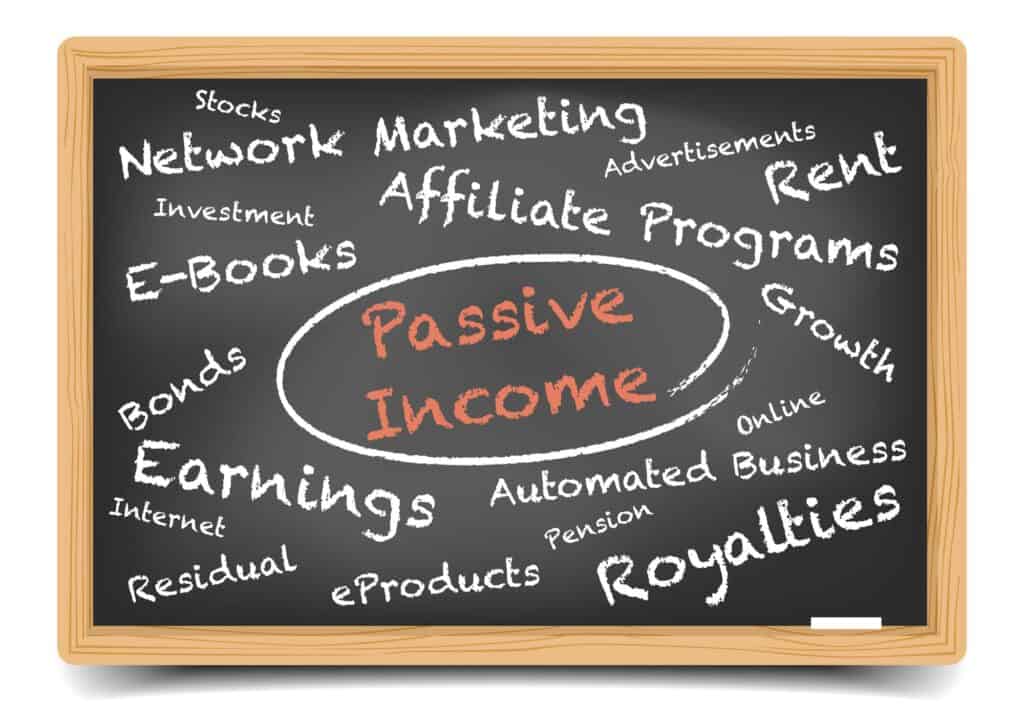Passive income is a term that has gained popularity in recent years, as more and more people are looking for ways to generate income without having to actively work for it. But what exactly is passive income? In simple terms, passive income is money that you earn on a regular basis with little to no effort required to maintain it. It is often referred to as “making money while you sleep.” And that’s what passive income solutions is all about- unearthing and sharing passive income solution ideas.
Disclaimer: This information is general in nature and for informational purposes only. It is not personal financial advice and has not taken into account your personal financial position or objectives. Make sure to refer to a licensed financial or tax advisor.
There are several benefits to earning passive income. First and foremost, it provides financial security and stability. With a steady stream of passive income, you can have peace of mind knowing that you have a consistent source of money coming in, even if you were to lose your job or face unexpected expenses. Additionally, passive income allows you to have more freedom and flexibility in your life. Instead of being tied down to a traditional 9-to-5 job, you can choose how and when you want to work, giving you the opportunity to pursue other passions and interests.
Table of Contents
The Reality of Passive Income: Debunking the Myth
While the idea of earning money without having to put in much effort sounds appealing, it is important to debunk some common misconceptions about passive income. One of the biggest myths is that passive income requires little or no work at all. In reality, building a passive income stream takes time, effort, and often requires upfront investment. Whether it’s investing in real estate, stocks, or starting an online business, there is always some level of work involved in setting up and maintaining your passive income stream.
Another misconception is that passive income will make you rich overnight. While it is possible to generate a significant amount of money through passive income, it is not a get-rich-quick scheme. It takes time and patience to build a successful passive income stream, and there may be periods where you don’t see much return on your investment. It’s important to have realistic expectations and understand that passive income is a long-term strategy.
The Different Types of Passive Income
There are several different types of passive income that you can explore, depending on your interests and financial goals. Here are some of the most common types:
1. Rental income: This involves purchasing a property and renting it out to tenants. The rental income you receive can provide a steady stream of passive income, but it does require active management, such as finding tenants, collecting rent, and maintaining the property.
2. Dividend income: Dividend income is earned by investing in stocks that pay regular dividends to shareholders. This type of passive income is relatively low maintenance, as you simply need to hold onto your stocks and collect the dividends.
3. Capital gains: Capital gains are earned by buying an asset, such as real estate or stocks, and selling it for a profit. While this type of passive income requires some upfront investment and active management, it can be a lucrative way to generate income.
4. Royalties: If you have creative talents, such as writing, music, or art, you can earn passive income through royalties. This involves licensing your work to others who pay you royalties every time your work is used or sold.
5. Affiliate marketing: Affiliate marketing involves promoting other people’s products or services and earning a commission for every sale or lead that is generated through your referral. This can be done through a website, blog, or social media platforms.
Real Estate Investing: Is it Truly Passive?
Real estate investing is often touted as one of the best ways to generate passive income. While it can certainly be a profitable venture, it is important to understand that real estate investing does require active management.
One of the main benefits of real estate investing is the potential for cash flow through rental income. By purchasing properties and renting them out to tenants, you can generate a steady stream of passive income. However, being a landlord comes with its own set of responsibilities. You will need to find tenants, collect rent, handle maintenance and repairs, and deal with any issues that may arise. This can be time-consuming and may require you to hire a property management company if you don’t have the time or expertise to handle it yourself.
Another advantage of real estate investing is the potential for appreciation. Over time, the value of your properties may increase, allowing you to sell them for a profit. However, this is not guaranteed and depends on various factors such as location, market conditions, and the overall economy.
The Risks and Rewards of Stock Market Investing
Investing in the stock market is another popular way to generate passive income. While it can be a lucrative venture, it is important to understand the risks involved.
One of the main benefits of stock market investing is the potential for capital appreciation. By purchasing stocks of companies that are expected to grow, you can earn a profit when the stock price increases. Additionally, many companies pay dividends to their shareholders, providing a steady stream of passive income.
However, investing in the stock market also comes with risks. Stock prices can be volatile and unpredictable, and there is always the possibility of losing money. It is important to do thorough research and diversify your portfolio to minimize risk. Additionally, it is important to have a long-term perspective when investing in stocks, as short-term fluctuations can be misleading.
Building a Passive Income Stream through Dividend Investing
Dividend investing is a popular strategy for building a passive income stream. It involves investing in stocks that pay regular dividends to shareholders.
One of the main benefits of dividend investing is the potential for a steady stream of passive income. By investing in dividend-paying stocks, you can earn regular cash payments without having to sell your shares. This can provide financial stability and allow you to reinvest your dividends to further grow your portfolio.
Another advantage of dividend investing is the potential for capital appreciation. Many dividend-paying stocks are from established companies that have a history of steady growth. By investing in these companies, you can benefit from both the dividends and the potential increase in stock price over time.
Getting started with dividend investing is relatively simple. You can open a brokerage account and start buying dividend-paying stocks. It is important to do thorough research and choose companies that have a track record of consistent dividend payments and strong financials. Additionally, diversifying your portfolio is key to minimize risk and maximize returns.
The Truth About Affiliate Marketing and Online Business
Affiliate marketing is a popular way to generate passive income online. It involves promoting other people’s products or services and earning a commission for every sale or lead that is generated through your referral.
One of the main benefits of affiliate marketing is the potential for high earnings. Depending on the products or services you promote and the commission rates, you can earn a significant amount of passive income. Additionally, affiliate marketing allows you to work from anywhere with an internet connection, giving you the flexibility to work on your own terms.
However, it is important to understand that affiliate marketing is not a get-rich-quick scheme. It requires time, effort, and patience to build a successful affiliate marketing business. You will need to create valuable content, build an audience, and establish trust with your audience before you can start earning significant income.
Starting an online business through affiliate marketing is relatively simple. You can create a website or blog, choose a niche or topic that you are passionate about, and start promoting relevant products or services through affiliate links. It is important to choose reputable affiliate programs and products that align with your audience’s interests and needs.
Rental Properties: The Pros and Cons of Passive Income
Investing in rental properties is another popular way to generate passive income. It involves purchasing properties and renting them out to tenants.
One of the main benefits of rental properties is the potential for cash flow. By charging rent to tenants, you can generate a steady stream of passive income. Additionally, rental properties have the potential for appreciation, allowing you to sell the properties for a profit in the future.
However, there are also risks and challenges associated with rental properties. One of the main risks is the potential for bad tenants. Dealing with late payments, property damage, and eviction can be time-consuming and stressful. Additionally, rental properties require ongoing maintenance and repairs, which can be costly.
To successfully manage rental properties, it is important to have good communication skills, be organized, and have a solid understanding of landlord-tenant laws. It may also be beneficial to hire a property management company to handle the day-to-day operations if you don’t have the time or expertise to do it yourself.
The Importance of Active Management in Passive Income
While passive income may seem like a hands-off way to earn money, it is important to understand that active management is still required to ensure the success of your passive income streams.
Active management involves monitoring and adjusting your investments or business strategies to maximize returns and minimize risks. This may include researching new investment opportunities, staying up-to-date with market trends, and making informed decisions based on your goals and risk tolerance.
Active management is especially important when it comes to real estate investing and rental properties. As mentioned earlier, being a landlord requires active management to find tenants, collect rent, handle maintenance and repairs, and deal with any issues that may arise.
In addition to active management, it is also important to regularly review and evaluate your passive income streams. This includes monitoring your investments or business performance, analyzing your returns, and making adjustments as needed. By actively managing your passive income streams, you can ensure that they continue to generate income and meet your financial goals.
Finding the Right Balance for Your Passive Income Strategy
In conclusion, passive income can provide financial security, freedom, and flexibility. However, it is important to have realistic expectations and understand that building a successful passive income stream takes time, effort, and often requires upfront investment.
There are several different types of passive income that you can explore, including rental income, dividend income, capital gains, royalties, and affiliate marketing. Each type has its own benefits and risks, so it is important to choose the ones that align with your interests and financial goals.
Regardless of the passive income streams you choose, it is important to actively manage them to ensure their success. This includes monitoring and adjusting your investments or business strategies, staying up-to-date with market trends, and regularly evaluating your returns.
Finding the right balance for your passive income strategy is key. It may involve diversifying your portfolio, combining different types of passive income streams, and actively managing your investments or business. By doing so, you can create a successful passive income strategy that provides financial stability and allows you to live life on your own terms.
If you want to discover more passive income ideas, then this is a good place to start.
FAQs
What is passive income?
Passive income is income that is earned without active involvement or effort from the recipient. It is often generated from investments, rental properties, or businesses that require minimal effort to maintain.
Is any passive income truly passive?
No, not all passive income is truly passive. While some forms of passive income require little to no effort to maintain, others may require ongoing management or maintenance. Additionally, there is always some level of risk involved with any investment or business venture, which can impact the level of passive income generated.
What are some examples of truly passive income?
Examples of truly passive income include rental income from a property management company, dividend income from stocks or mutual funds, and interest income from savings accounts or bonds. These forms of passive income require little to no effort from the recipient to generate.
What are some examples of passive income that require some level of effort?
Examples of passive income that require some level of effort include rental income from a property that requires ongoing maintenance or management, income from a business that requires occasional oversight or decision-making, and income from investments that require monitoring and adjustment.
What are the benefits of passive income?
Passive income can provide financial stability and freedom, as it allows individuals to earn money without actively working. It can also provide a source of income during retirement or periods of unemployment. Additionally, passive income can be a way to diversify one’s income streams and reduce reliance on a single source of income.







